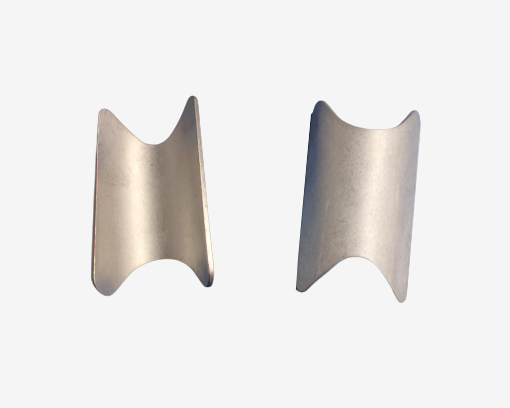After heat treatment, aluminum alloy forging often exhibits bubbles on the surface of the forging due to heating at high temperatures. The bubbles are very thin and can be easily peeled off in water, causing gas to escape. The bubbles have obvious layering, and the inner wall is corrugated with gray black extinguishing products. At the same time, there is often a phenomenon of peeling on the surface, which is also due to the rough appearance of the mold groove, the high temperature, level, and speed of the forging deformation process, the lack of smoothness or poor smoothness of the mold, and the easy adhesion of aluminum alloy to the mold.
The existence of these defects has caused a large number of aluminum alloy forgings to be scrapped due to appearance problems. Some demands have been negotiated with users to handle concession acceptance and save processing and application, but it has also had a negative impact on enterprises.
Wanda Forging believes that the quality of aluminum alloy forgings on the surface can indicate a company's level of process technology and quality management, and thus reveal our own shortcomings. Especially due to the surface quality issues of forgings, polishing and repairing have resulted in dimensions that do not meet the requirements of the drawings, with multiple repetitions and a low pass rate for a single inspection, leading to wastage of manpower and material resources. Some of them were scrapped in batches due to the Z final size exceeding the application requirements, and some aluminum alloy forgings had a qualification rate of less than 50%. This is due to the lack of improvement in our process level and understanding.

The mechanical properties of aluminum alloy forgings do not meet the requirements of technical specifications, which is also a common problem in physical and chemical testing. This requires additional aging or repeated heat treatment to deal with.
Therefore, heat treatment is crucial for improving the microstructure and properties of aluminum alloy forgings. This requires the measurement of the average temperature and accuracy of the heat treatment furnace to meet the application requirements before installation. At the same time, the selection of heating temperature and heating time should be appropriate, and the transfer time should be as short as possible. Generally, a heating furnace with a temperature control accuracy of ± 3 ℃ should be selected to ensure good mechanical properties after one heat treatment, and repeated heat treatment should be avoided as much as possible to reduce energy consumption and shorten the consumption cycle.
The output value of aluminum alloy forged parts in enterprises is relatively small, so the quality problems presented cannot attract high attention. In technical process research, equipment transformation, forging process, and heat treatment process, systematic analysis and consideration have not stopped.
Especially in terms of forging cracks, coarse grains in forgings, surface quality and polishing treatment, machining deformation and stress cracks, there is a lack of analysis and research. The existing problems should be addressed through systematic upgrades and improvements in mold processing accuracy, smoothing agents, heating temperature, surface protection, and disposal, in order to enhance the quality stability of aluminum forgings and better participate in international market competition.





